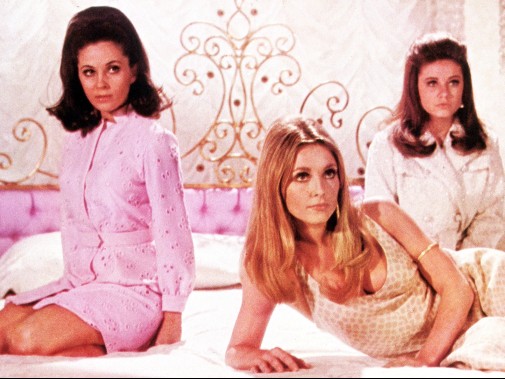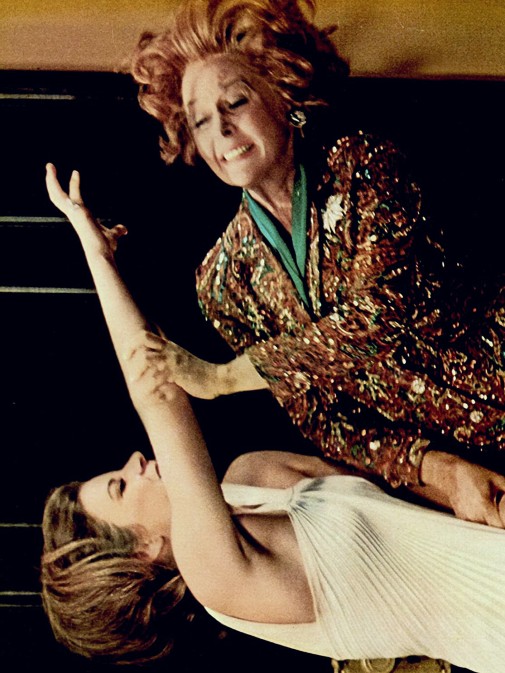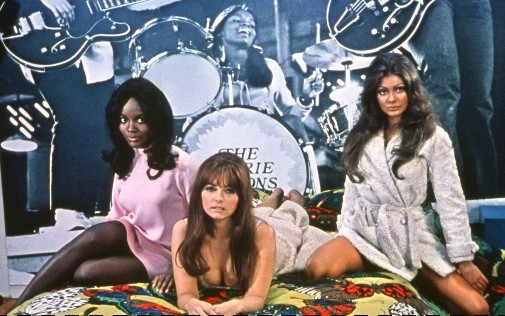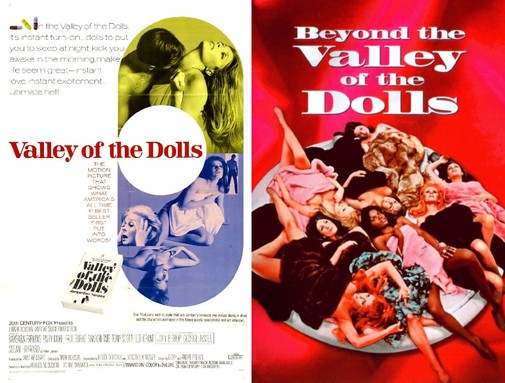As part of a robust Pride-themed selection, the Criterion Channel has added Russ Meyer's 1970 Beyond the Valley of the Dolls to its streaming roster. The Roger Ebert-penned follow-up cum send-up to the 1967 trashterpiece Valley of the Dolls is as campy as its predecessor, making the lurid underbelly of show business into the stuff of dragtastic entertainment. In other words, it's a perfect flick to put on whilst celebrating Pride Month. As I'd never seen either picture, I decided to take this as an opportunity to explore them both and share my thoughts with you, dear readers. I don't know what I was expecting from this double feature, but it wasn't what I found. Suffice it to say, I was surprised, gooped, and gagged…

Adapted from the bestselling novel of the same name by Jacqueline Susan, Valley of the Dolls follows three women trying to make it in the entertainment industry and eventually succumbing to barbiturate addiction. While the novel sets its story across decades, the picture's narrative is more compact, making the characters' demise feel precipitous rather than protracted. Anne Welles is a secretary turned model and our entry point into the world of stars and glamour. We follow her from small-town America to New York, where the film and its erstwhile protagonist find Neely O'Hara, a Broadway newcomer destined for Hollywood greatness. There's also Jennifer North, a talentless chorus girl whose self-worth is perilously tied to physical beauty.
In between kicky montages dripping with the desire to appear psychedelic, Valley of the Dolls moves with a leisurely pace, if not lethargy. While the film may jump over entire character arcs in a scene transition, its individual passages linger. Early on, between slow-motion snow and beguiling shots of 1960s Manhattan, director Mark Robson casts a spell with trance-like properties, lulling us into a state that's not too distant from oneiric reverie. The artifice of the story, the sets, and indeed the performances only adds to this sense of dreamy unreality, a nightmare that's so pretty it hurts. It's easy to laugh at the spectacle, sure, but some specters of genuine emotion haunt the accidental comedy, as much a tribute to Morpheus as Dionysus.
In the role of a domineering Broadway diva, Susan Hayward gives us pure drag excellence, lip-synching from within a giant kinetic sculpture and being forced into unwilling wig reveals. However, she seems to know what film she's in and precisely the type of acid to lace her dismissals with while delivering her viperous lines. The Oscar-winner's paradox of aloof bombast only makes the other human elements more distinct in their idiosyncrasy. None of the leads may be examples of disciplined character creation, but they sure leave a strong impression. For instance, there's a plastic sheen to Barbara Parkins' Anne, who ends up feeling more unnerving than risible in her emptiness.
Sharon Tate may underplay Jennifer with woodenness in her first scenes, but she knows just when to inject a shot of reality into the pageantry. During her character's tragic end, the actress's body language is disarmingly loose, as if the barriers of fakery separating us from this woman had disappeared for one cruel instant. It's because of such moments that one can't wholly dismiss Valley of the Dolls. All that and we haven't even gotten to Patty Duke's Neely, a Judy Garland-esque nightmare of self-destruction paired with consummate showmanship. If Hayward chews on the scenery, Dukes swallows it whole, a gorging black hole of infinite depth and bottomless darkness. She's an actress possessed!

More importantly, she finds something worth loving about an actorly expression that goes so beyond the norm it's easy to consider obscene. Drunkenly parading through the ludicrous scenes in Travilla couture, Dukes' Neely is a celebration of brokenness. A shattered porcelain doll, each of her cracks are filled with gold, perilously glued and unable to keep itself together to the bitter end. As we witness character and actress shatter into pieces, it's difficult not to stand up and applaud even as our faces may still be recovering from a mocking sneer, throats vibrating with a contemptuous cackle. In a flash, ironic pleasure morphs into unironic awe. That's the power of Patty Duke and the unholy mess that is Valley of the Dolls.
Despite all its dysfunctions, I couldn't help but enjoy this 1967 classic. I was even moved by the preposterous melodrama, the absurd creative choices, and remain slightly agog at my reaction. I can certainly understand why audiences flocked to see it and why, a couple of years later, 20th Century Fox decided to go ahead with a putative sequel. Well, a quasi-sequel is probably more accurate. Beyond the Valley of the Dolls explicitly refutes its sequel status on an opening title card. Instead, it proposes a variation on the original's themes, its mechanisms, and archetypes. Such language could indicate a high-minded affair, but the reality is far from such lofty ideas. The movie positively runs away from that stale possibility.

One of our beloved Pope of Trash's favorite films, Beyond the Valley of the Dolls takes the same premise and twists it out of shape. Not quite a parody, more of a fever dream, the movie is what happened when Hollywood gave a provocateur like Russ Meyer access to studio resources. Edited at breakneck speed, the parody is so naked it defies its audience to take offense while never giving them a second to breathe. In that regard, it's very much the opposite of the first film's intoxicating dullness. Still, even with antithetical editing and pacing strategies, both movies are mesmerizing, making their rhythms a big part of the spell. Valley waits around so long that tragedy turns to comedy and back again, while Beyond is just unrelenting in all the best ways.
Bombarded by equal opportunity nudity, repeated images, and the purpliest of dialogues, the audience has no option but to succumb to the movie's attack. Helpless and defeated, the viewer must give themselves to the fantasia of L.A. depravity. Orgiastic ecstasy is soon to follow such surrender to the marvels of Beyond the Valley of the Dolls. Critics panned the thing on initial release, just as they did the first movie, but modern cinephiles have been prone to imbue these artifacts with cult status. Honestly, I'm with them. Sign me up to the cult of this demented diptych. In fact, I can't wait to re-watch Valley of the Dolls and Beyond the Valley of the Dolls. But which one shall I revisit first? Which one is better? Which one is more fun?
Looking back at these hallucinatory moving pictures, I can't help but think one's preference will end up reflecting what kind of camp is more to one's taste. Valley of Dolls is pure naïve camp, the sort which Susan Sontag so effusively celebrated and dissected in her "Notes on Camp". Beyond the Valley of the Dolls is more intentional, though I don't think such purpose deems it less pleasurable. As self-aware kitsch or a facsimile of failed seriousness, the Russ Meyer crown jewel is never burdened by the pretension of great art, the responsibility of prestige. It's thus freer to have fun and invite the audience along for the ride, forging a strange complicity, almost a camaraderie, between the trash on-screen and the trash-loving viewer. So, points for the second movie.

In any case, both films are a delight, and I heartily recommend you watch them if you can and haven't yet. As mentioned before, Beyond the Valley of the Dolls is on the Criterion Channel. The first movie, on the other hand, is available to rent from various services.
